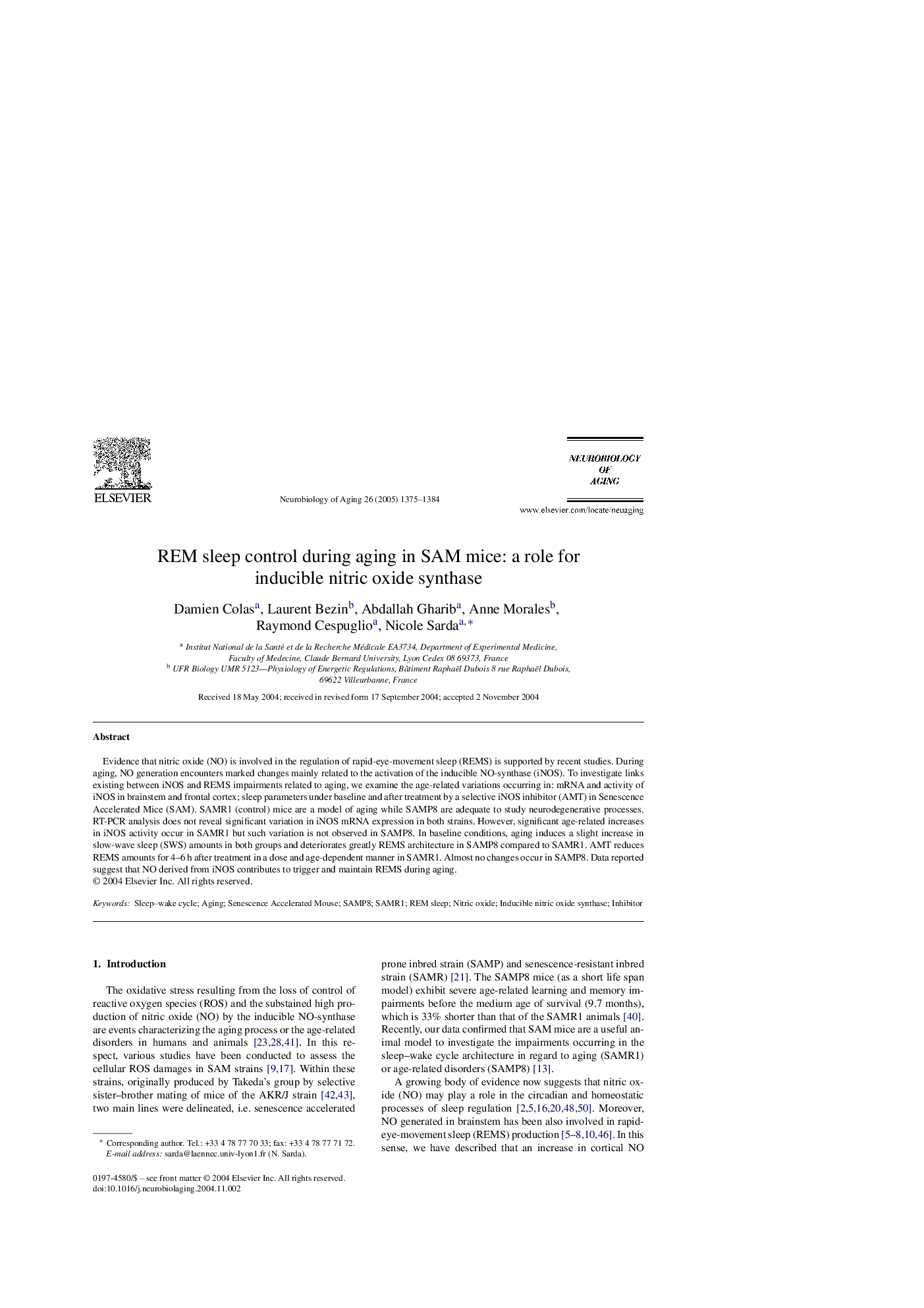| Article ID | Journal | Published Year | Pages | File Type |
|---|---|---|---|---|
| 9645015 | Neurobiology of Aging | 2005 | 10 Pages |
Abstract
Evidence that nitric oxide (NO) is involved in the regulation of rapid-eye-movement sleep (REMS) is supported by recent studies. During aging, NO generation encounters marked changes mainly related to the activation of the inducible NO-synthase (iNOS). To investigate links existing between iNOS and REMS impairments related to aging, we examine the age-related variations occurring in: mRNA and activity of iNOS in brainstem and frontal cortex; sleep parameters under baseline and after treatment by a selective iNOS inhibitor (AMT) in Senescence Accelerated Mice (SAM). SAMR1 (control) mice are a model of aging while SAMP8 are adequate to study neurodegenerative processes. RT-PCR analysis does not reveal significant variation in iNOS mRNA expression in both strains. However, significant age-related increases in iNOS activity occur in SAMR1 but such variation is not observed in SAMP8. In baseline conditions, aging induces a slight increase in slow-wave sleep (SWS) amounts in both groups and deteriorates greatly REMS architecture in SAMP8 compared to SAMR1. AMT reduces REMS amounts for 4-6Â h after treatment in a dose and age-dependent manner in SAMR1. Almost no changes occur in SAMP8. Data reported suggest that NO derived from iNOS contributes to trigger and maintain REMS during aging.
Keywords
Related Topics
Life Sciences
Biochemistry, Genetics and Molecular Biology
Ageing
Authors
Damien Colas, Laurent Bezin, Abdallah Gharib, Anne Morales, Raymond Cespuglio, Nicole Sarda,
